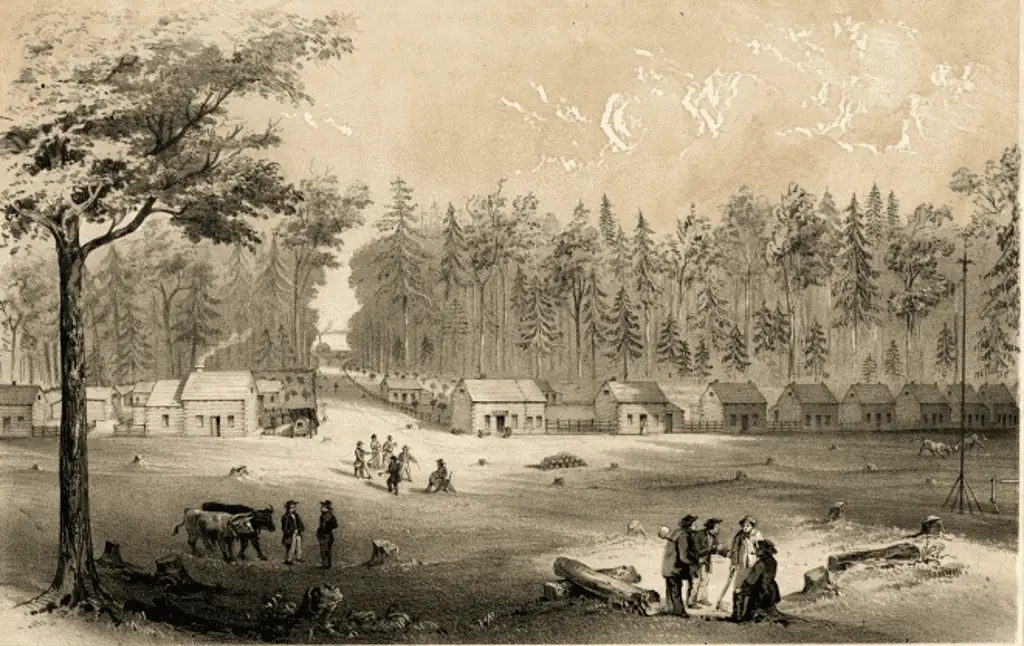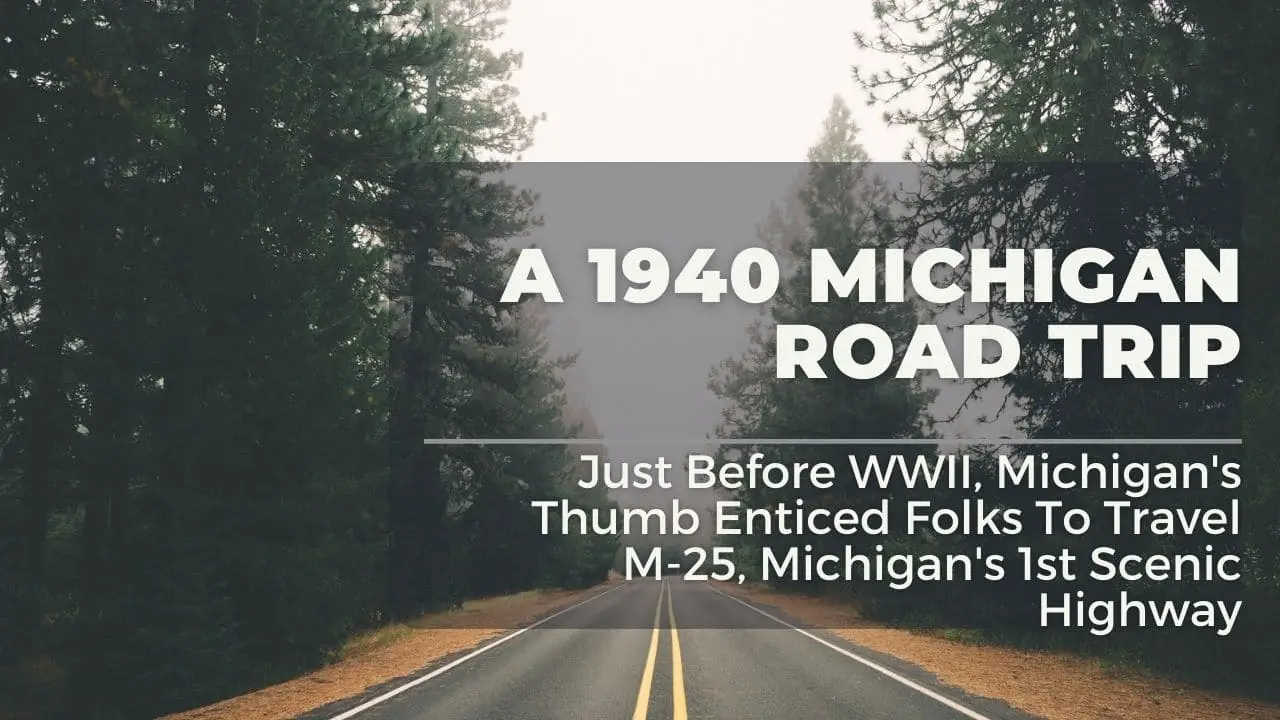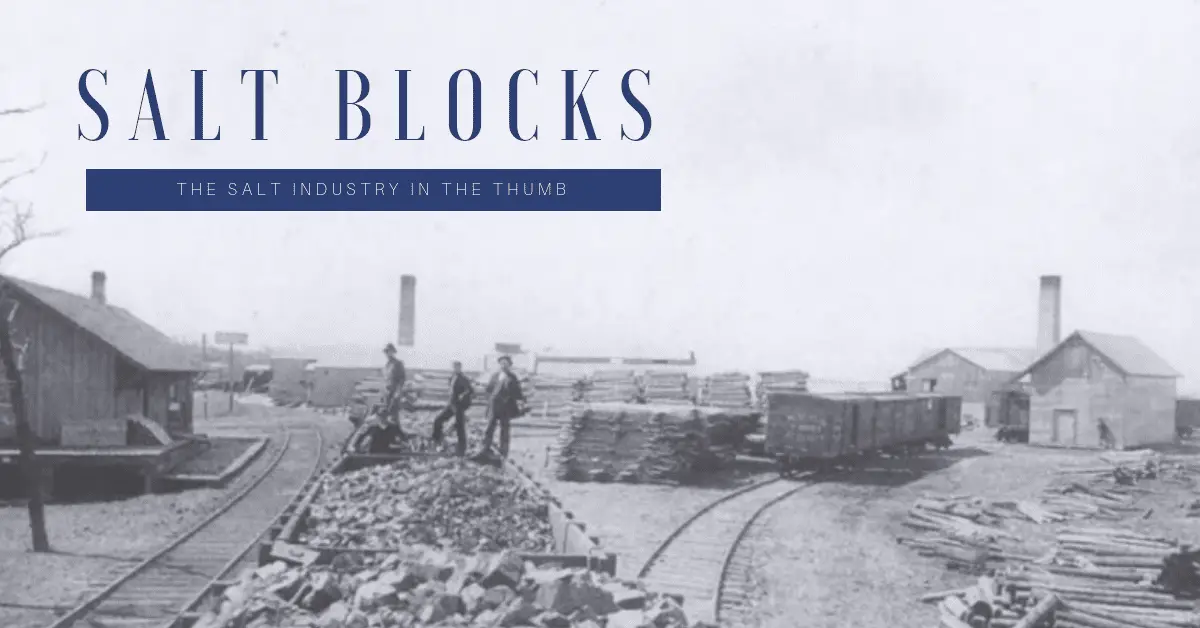The Ora Labora Experiment is an excerpt from a common historical document that has been scanned and re-published numerous times on the Internet from the “Pioneer History of Huron County” – 1922 by Florence McKinnon Gwinn, Caseville, Michigan. Some researchers consider this work the starting point for further research of the colony. The author and researcher, Florence McKinnon Gwinn (1858-1924), headed up the Huron County Pioneer and Historical Society. The Pioneer History of Huron County is her only known published work. The following is from pages 51-53. It should be noted that the 1857 date of the colony formation is generally viewed as inaccurate.
Pioneer History Of Huron County A Community Experiment

Among the vanished villages of Huron County is that of Ora Labora, a colony situated between Caseville and Wild Fowl Bay (now Bay Port) which was modeled after the famous German society at New Harmony, Penn. The property was held in common but each settler held a piece of ground in his own right. They had several thousand acres of land, bought from the government in 1857-8. The heavy timbered country and the swampy nature of much of the land required a large amount of ditching to render it valuable for cultivation and the remoteness from any existing village, at that time Bay City was the nearest trading point, rendered the making of the colony an extremely difficult task. Their hardships were unusually severe. The purchase had completely exhausted their money. Fever and ague abounded and aggravated all of their other ills and the wonder is that the colonists struggled as long and bravely as they did against the odds they encountered. Then the war came on and in its latter stages sent its drafting summons into their ranks. Too poor to procure substitutes and too honest to run away as many of their neighbors did, thus increasing the burdens which fell upon them (as the county had to furnish its quota) their ranks were depleted until the women and old men were almost left alone to carry on the farming operations. The load was greater than they could bear and Ora Labora was broken up.
In 1865 the editor of the Huron County News visited the colony and gives this vivid picture of it in that day: “While on a trip up the shore we improved the opportunity of visiting our friend Mr. Emil Baur, pastor and one of the founders of the society which at the present time numbers 140 souls of which 28 are heads of families, 10 single men, five young ladies, 28 wives, 73 children under 14 years of age and 36 voters. The society has purchased about 3,000 acres and contracted with the state for 10,000 more. They have 160 acres cleared and under cultivation. Have built a saw and grist mill making their breadstuffs from grain of their own production and also manufacturing all kinds of lumber both for their own use and exportation. A dock has been built extending several hundred feet into the bay. The society also owns one of the islands in Wild Fowl Bay containing 180 acres on which they plan to raise grapes. The village of Ora Labora is regularly laid out in squares with wide streets and the colonists have adopted a good old custom of the fatherland adorning the streets with fruit trees. Each newcomer, we understand, is given 40 acres of land.”
After the disbandment of the colony, we find this statement about the colonists in a Detroit paper of ‘1871. “The colonists of Ora Labora while they did not succeed as a community did much permanent and really valuable work for that section of the county, and the case being presented to the legislature homesteads of 80 and 40 acres according to service rendered were granted them by the state under proper restrictions and a goodly number of the hardy and faithful band are still to be found living on their own farms, well cleaned up and finely tilled and gradually emerging into a condition of independence and comfort hardily earned and richly deserved.” The remaining lands and buildings became the property of the Harmony Colony of Economy, Penni., who held a mortgage on it. A few of the old buildings remain to mark the site of this once populous village. Bert Baur, of Bay Port, is the son of Emil Baur, once so prominent in the affairs of the colony.
Source – Pioneer History of Huron County, Michigan
by Florence McKinnon Gwinn.
Huron County Pioneer and Historical Society. 1922, Pp 52-53
Related Ora Labora Experiment Research and Stories
- Ora Labora – The Start of a Tiny Colony in Michigan’s Wilderness
- Ora Labora 1863 – A Lost Colony in Michigan’s North – Part Two
- Ora Labora 1864 – A Lost Colony in Michigan’s North – Part Three
- Ora Labora 1865 – A Lost Colony in Michigan’s North – Part Four





